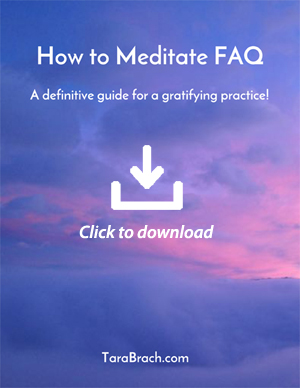• How to Start a Mindfulness Meditation Group (PDF) –
Mindfulness meditation groups are a wonderful way of connecting with others to share and deepen your meditation practice. These groups come in many shapes and sizes and provide community, accountability and a supportive space to connect with others while steadying and enriching your practice.
WHO WHERE WHEN HOW
Meditation groups frequently start off with a handful of interested friends meeting in one person’s home (or alternating homes) to practice. As attendance increases – or even from the very beginning – groups might meet in a room or hall in a church, library, or other building. Online groups can provide much needed support and connection for those who have limited access to “in person” resources due to geography, health, or scheduling limitations.
There is no required minimum number of participants. Groups have functioned successfully for years with only two or three members. Some people actually prefer the intimacy of a small group while others feel more supported by the stronger collective energy of larger groups. Online groups may be smaller (6-8 members) to allow adequate time and space in the event of tech difficulties (see “TECHNICAL GUIDELINES FOR ONLINE GROUPS” below).
The size of the group may depend upon whether you choose to have an open or closed group format. In an open group, drop-ins are encouraged and new members are welcome at any time. Closed groups typically set a number of spaces that feels comfortable and stop adding new members once that limit has been reached. They then will add new members from time to time as space opens up. This is an important choice and will affect the makeup of your group. Open groups tend to be larger and are often in a state of flux, providing ongoing opportunities to meet new people and make new connections. Smaller closed groups allow members to bond and get to know each other over time. Which of these you choose will be unique to your group and what feels best to your members.
Similarly, there is no one “right” schedule. The frequency and length of each meeting will largely depend upon the activities planned for the group. You might meet weekly, every two weeks or even once a month, depending on the desires of the participants. Meetings might be an hour or may stretch out over an entire evening if your group gathers to share a meal or listen to a talk and engage in mindful discussion afterward. Online groups will need to consider time zone in setting a meeting schedule.
Groups often find it helpful to establish basic guidelines regarding the purpose of the meetings and, from time to time, review and revise them as needed. Basic guidelines provide a structure for the group meetings and help orient new members as they join an existing group. These might include a description of the group format, time and frequency of meetings, whether the group will be open or closed, and the group’s primary sources of inspiration or direction (if any).
GROUP FORMAT
Your group’s time together may consist of any number of activities. It could be as bare-bones as a simple sitting meditation – guided, silent, or some of each – and a friendly greeting before starting or re-entering your daily life. Some groups like to include a reading, guided meditation, or talk (live or recorded) and more in-depth sharing time. Others might be drawn to chanting, walking meditation or enjoying a meal together in mindfulness. Some groups develop around applying mindfulness to a common interest or theme, e.g., addiction, parenting, mental health professionals, etc.
One popular format for many groups is to begin with a guided or silent sitting meditation, followed by a short check-in from each member and open time for sharing joys, difficulties, and questions about their meditation practice and how it is working (or not) in their daily lives. The group then closes with a short sitting or loving-kindness meditation as a way to foster a greater sense of connection to each other and to the world.
The sharing period gives participants the opportunity to listen deeply to one another while also paying attention to what arises in themselves. Some groups like to choose specific topics to focus the sharing (such as forgiveness, mindfulness at work, dealing with conflict or working with anxiety,) while others prefer a more open ended discussion format. The confidentiality of the group creates a safe and supportive refuge where each individual is nourished as they share freely from real lives and hearts. Below, you will find more information about mindful sharing and how it creates trust and safety in the group setting.
FACILITATING
Depending on the preferences of your group, you might have a designated facilitator. This responsibility could belong to the same person for all meetings or could rotate from one meeting to the next. Many groups have co-facilitators at some or all meetings. Whatever the format each group chooses, facilitating a mindfulness meditation group provides many opportunities for growth in your own meditation practice.
The facilitator’s role doesn’t necessarily have to be to lead or to teach. In addition to looking after the overall arrangements for meeting (place, time, notifications), keeping time, and making sure necessary elements for the practice session (such as chairs, bell, clock, recordings) are in place, the group facilitator strives to promote a safe, stable atmosphere for people to meditate and engage with one another. While all participants share the responsibility for the overall functioning of the group, the facilitator helps by skillfully guiding the discussion (see “MINDFUL SHARING” below) and keeping the group on track with its defined purpose and intention.
Facilitating a meditation group is incredibly rewarding and, like anything else in life, can be quite challenging. All groups are likely to go through rough patches and have growing pains from time to time. Each meeting is a learning experience and it is important for facilitators to be open to feedback from other members and willing to make adjustments as the group forms and settles. The effort will be well worth it.
MINDFUL SHARING
For many who participate in meditation groups, a rich part of the gathering is having the opportunity to share experiences with each other. The following guidelines can help to create a safe and supportive container for mindful sharing.
- As part of forming the meditation group, come to an agreement about key elements of the mindful sharing period. This might include a discussion about the responsibilities of the facilitator, how long the sharing period will be, the confidential nature of the group, etc.
- Start with a short check-in around the circle in which each person introduces themselves and says a few words about how they are doing. Then open the floor for spontaneous sharing.
- Appropriate themes include the joys, difficulties, and insights experienced in meditation practice and the multitude of ways to bring mindfulness alive in relationships, work and daily life.
- Members should feel free to share at any time, but should never be obligated to do so.
- The group might choose some kind of signal for members to use to let the group know when they have something to share and when they have finished sharing. This might be a bow, a hand raise, or passing a talking stick…whatever method works best to minimize accidental interrupting or talking over one another.
- Let there be a pause between shares. Slowing down the process promotes awareness of what is arising within.
- Speak about what’s alive for you in this moment, from your heart and your own direct experience. Refrain from intellectual/philosophical discussion or long storytelling.
- Be lean of expression – it helps everyone who is listening and leaves time for others to be heard. If you’ve already spoken, give others a spacious opportunity to share a first time before you share again.
- Listen deeply to the speaker, noticing what arises within you as you listen – and what arises as you speak.
- Refrain from offering unsolicited advice.
- Honor confidentiality.
GETTING THE WORD OUT
There are many ways to let prospective members know about your group or to find an existing group you may like to join. Here are some you might consider:
- Making flyers, leaflets or postcards and distributing them at community centers, hospitals, doctor’s offices and alternative health care clinics, yoga studios, health food stores, libraries, kiosks, etc;
- Listing your group on websites such as the Buddhist Insight Network or Meetup;
- Local news sources;
- Advertising on your own website or social media;
- Encouraging group members and friends to spread the word.
As your group grows, you might organize daylong or weekend retreats to provide additional opportunities for members and new friends to integrate mindfulness practice more fully into their lives. You can arrange for an experienced teacher to guide the activities or lead them yourself with the support of the above resources. You might find it useful to establish an email list for getting announcements out.
RESOURCES
Here are some resources that can support you in starting a group practice:
New to Meditation – Includes teaching talks & guided meditations for beginners, and Frequently Asked Questions about meditation.
Recorded guided meditations and talks:
- Tara Brach – Audio and video talks (site is searchable – click magnifying-glass icon on upper-right corner),
- Tara Brach – Guided meditations,
- Walking meditation instructions (audio & PDF)
- Dharma Seed – talks in Western insight meditation tradition.
Information and assistance for setting up a Buddhist meditation group:
Virtual communities, tools, and support for practice:
- Insight Timer – meditate online with a worldwide community at any time;
- Plumline – supports online meditation practice communities in the Plum Village tradition – worldwide listing provided.
- Guidelines on mindful speaking and listening.
TECHNICAL GUIDELINES FOR ONLINE GROUPS
- Identify an online platform. There are many free options. Most groups use either Zoom, Google+ Hangouts or Skype.
- The group facilitator will send out instructions to each new group member and, ideally, should have one individual meeting with each member to work out tech glitches.
- The group facilitator will initiate the online meeting invitation on the chosen platform at the agreed upon time of the meeting. Members simply log into the platform (e.g., Zoom, Google+ Hangouts or Skype) and accept the invitation. Please don’t initiate an invitation.
- Please try to enter on time, because entries make a noise that will be distracting in a meditation period.
- Unless speaking or during a period of open dialogue, please keep microphones on mute to minimize background noise.
- Check to be sure the camera is ON.
- Please refrain from using “Chat” for side conversations in order to keep all energy focused on the group space and maintain deep listening and presence. Reserve Chat usage for any technical difficulties that require an alternate form of communication with the group.
- Please do not use the “Capture” function (which takes photos) during meetings in order to preserve confidentiality.
- To facilitate online communication and connection, some groups set up closed Facebook page or a Google+ closed Community to post talks and reflections or to offer updates or support between meetings.
The most important thing? ENJOY! It is a wonderful service to yourself, your fellow group members, and your community to make this support available for cultivating the awakened heart in us all. Take it step by step; let it be organic, creative, and fun!


